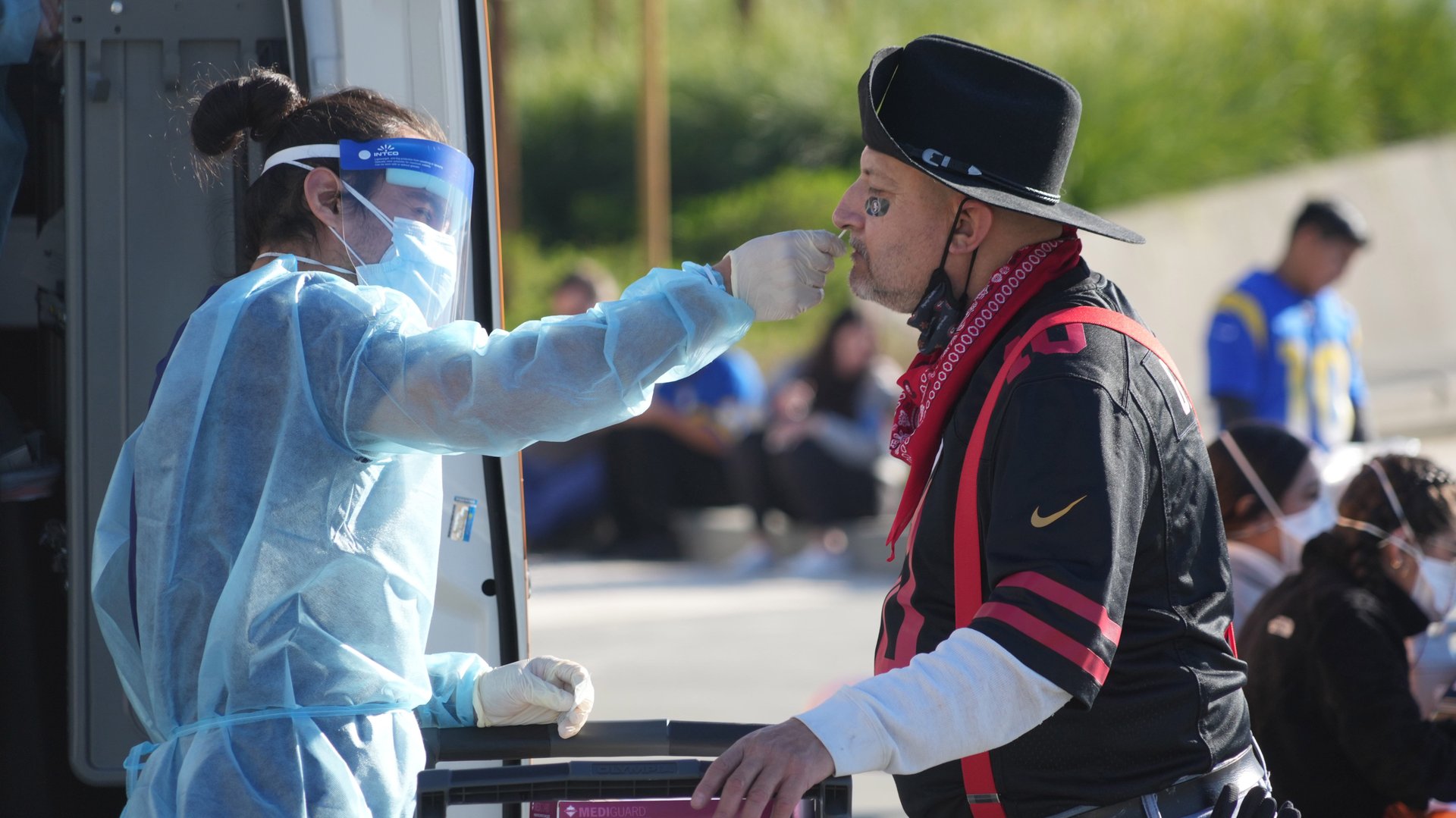When will the omicron wave peak?
The global omicron wave has seen many countries report their highest levels of covid infection in the entirety of the pandemic, but with the existence of effective vaccines, albeit unevenly distributed, and improved medical treatment, it has played out differently to previous strains.


The global omicron wave has seen many countries report their highest levels of covid infection in the entirety of the pandemic, but with the existence of effective vaccines, albeit unevenly distributed, and improved medical treatment, it has played out differently to previous strains.
The variant even causes that may be less severe than delta variant infections, though the World Health Organization has cautioned against calling these infections mild. Officials in London are already drawing up plans for “living with covid,” even as UK infections remain high.
In particular, omicron waves appear to peak and burn out faster than earlier strains. For example, infections in London already seem to have peaked, as early as the first week of January. The peak was also lower than the worst-case scenario predicted by some disease modeling initiatives. “Modeling, post-vaccination, has become extremely difficult” Raghib Ali, a senior clinical research associate at the University of Cambridge’s MRC epidemiology unit, told The Guardian, all but admitting its relative lack of value.
Nevertheless, we can use real-world examples alongside the modeling to estimate peaks in other major regions, such as the US and India.
The South Africa wave
South Africa was the first country in the world to both experience and study the impact of omicron.
Gauteng, the early epicenter, saw a steep and sudden rise in cases that came down almost as fast. Generally, pandemic waves have had a lifespan of about six to eight weeks, peaking at roughly the four-week mark.
But the omicron wave in Gauteng peaked around the 15-day mark, according to data analysed by the Financial Times. The overall test positivity rate peaked around day 30, and went sharply down from there.
The most promising trend to emerge was that at their peak, hospitalizations were about two-thirds of what they were during the delta surge, even though only 25% of the population was fully vaccinated. Only about a third of those in South Africa’s Netcare hospitals suffered acute respiratory symptoms.
The omicron wave in the UK and US
Both countries are currently experiencing a sharp wave, likely exacerbated by winter. They are also similar in demographic and vaccination profile, which means data from the UK could be instructive for the US.
In the US, “a rapid decline is not guaranteed,” Jeffrey Shaman, an infectious disease modeler and epidemiologist at Columbia, wrote in The New York Times. “South Africa has a younger population compared to the United States, and younger people are more likely to have mild, undetected infections. South Africa is also in summer, which is less favorable for virus transmission.”
His model predicts between 3 and 4 million new infections in one week, peaking around the third week of January. But although its accuracy cannot be verified yet, we can at least compare London and New York, densely populated metropolises of similar size that also see a great deal of movement of people in and out of the city. If London’s apparent peak is a guide, New York will have a similar trajectory.
When will India’s third wave peak?
India is now recording nearly 180,000 new infections a day, nearly half of the 400,000 at the peak of the delta wave in May.
“We expect that 85.2% of infections will have no symptoms. They will be asymptomatic, but amongst the cases, we still expect quite a number of them to end up in hospitals and in terms of death, cases will be much reduced,” Christopher Murray, director of the Institute for Health Metrics and Evaluation, told news agency ANI. “So we expect that the peak of hospital admissions in India will be about a quarter of what you had for the delta wave, and deaths should be less of what you saw for delta.”
According to a model released by Indian Institute of Technology, Madras, the third wave could peak between Feb. 1 and 15, and will likely be much higher than the delta wave. The R0 value, the rate of transmission from one infected person to others in the community, is already at 2.69. During the peak of delta wave infections, the R0 value was 1.69. Again, as Raghib Ali of the University of Cambridge suggests, modeling is not to be entirely relied upon.
But more than 60% of India’s adult population is fully vaccinated, and about 90% have received at least one dose. The government has also begun rolling out booster doses for the elderly and frontline and healthcare workers from today (Jan. 10). That is the biggest single difference between this and previous waves.